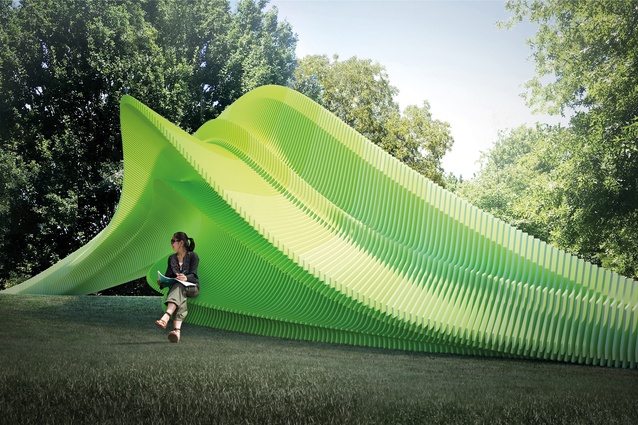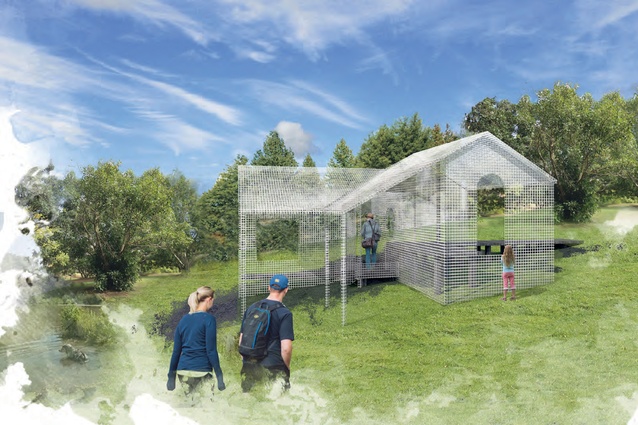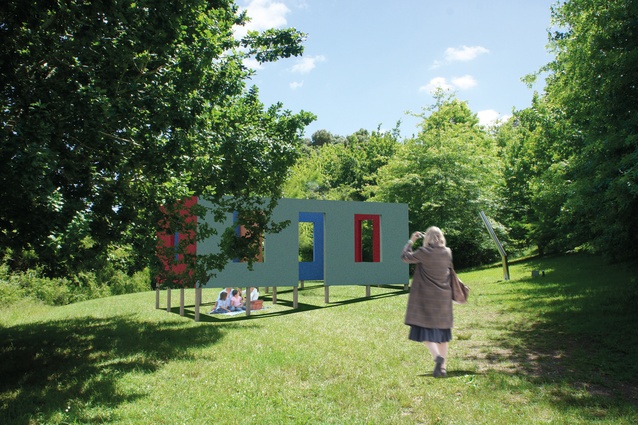Brick Bay Folly 2019: Finalists
Five finalists have been selected from a strong field of 18 submissions for this year’s Brick Bay Folly competition. The winner will create a temporary folly, somewhere between sculpture and architecture, to be installed at Brick Bay, north of Auckland, in early July.
Chair of the Brick Bay Folly, architect Richard Harris, said the judges were very impressed with the high quality and diversity of design shown in this year’s entries. “Most of the proposals were informed by a well-considered conceptual approach together with a detailed understanding of how to translate their visions into compelling and buildable propositions.”
Harris said the five finalists represented a good cross-section of the diversity of the proposals submitted and “an impressive demonstration of the considerable talent of our architectural students and recent graduates”.
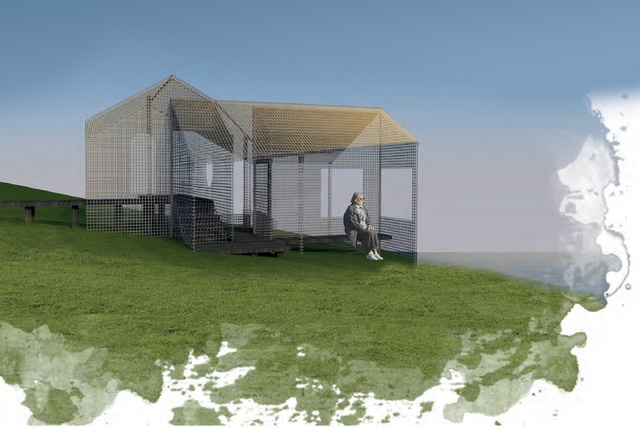
Ghost Chips by graduate Qun Zhang from Cottee Parker Architects, Melbourne and architect and illustrator Lisa Huang is a response to the loss of the Aniwaniwa Visitor Centre by John Scott. The steel mesh structure searches for the idea of legacy, heritage and culture represented in architecture and it imagines spaces lost, while teasing at our loss. The black stained timber and wood mulch below draws inspiration from the Ureweras and reflects the literal translation of its name ‘burnt manhood’. Click here to see the full proposal…
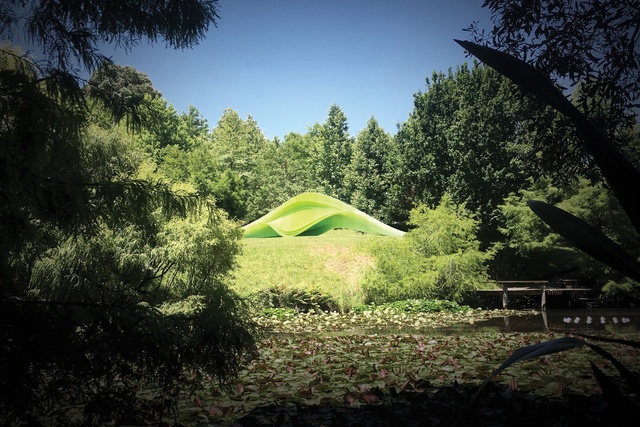
Terraqueous by Matthew Le Grice from Warren and Mahoney is intended to reside somewhere between the natural and the alien. Its form is reminiscent of rolling hills and folding waves (from which the name ‘terraqueous’ is derived), yet its stratified construction demonstrates an underlying fabrication and patterning that is distinctly man-made. It twists and turns in a way that challenges what we encounter in the natural world, presenting simultaneously as a fluid form and a rational man-made construction. Click here to see the full proposal…

Dwelling by Joe Lyth from Respond Architects takes the form of an abstracted shell of a traditional two-room home that, unlike its predecessors, allows the inhabitant to appreciate the surroundings all around. It serves as a reminder that homes are not just a sum of their parts, they are completed by the sites outside their walls. Click here to see the full proposal…
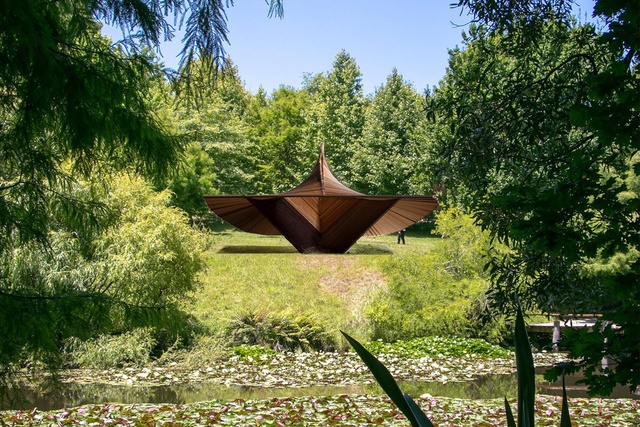
The Wood Pavilion by University of Auckland MArch student Leo Zhu is an immersive spatial experience of light and materiality. Sloped at 20 degrees, its timber structure rests along the gentle slope with soaring wings and an interior open for exploration. The structure is representative of a quiet witness to the stories and memories created in the park. Click here to see the full proposal…

Listen to the Lorax by Victoria University MArch students Ethan Murray and Emily Newmarch is inspired by the story of that same name, around the contrast between a polluted world ruined by corporate greed and the environment. Considering New Zealand’s own unique built environment, it creates an ephemeral experience through brightly coloured gabion structures filled with recycled charred timber.
The gabion structures reference two tightly packed urban blocks with a street (timber walkway) running between them. The density of these tall thin structures reflects on medium and high-density living conditions as houses are built closer together. Click here to see the full proposal…
This year’s judges were Chair Richard Harris; Richard Didsbury, Brick Bay director; Anna Didsbury, Brick Bay General Manager; Sheridan Dickson, Brick Bay Art Manager; Yusef Patel, lecturer at Unitec; Ryan McKenzie, Resene architectural and specifier representative; Chris Barton, editor Architecture New Zealand; and Cynthia Yuan, Xigo project manager and last year’s co-winner.
The Brick Bay Folly is sponsored by Resene (principal sponsor), Architecture New Zealand, Unitec, Brick Bay, Sam Hartnett Photography and the New Zealand Institute of Architects.
This article first appeared in Architecture New Zealand magazine.


